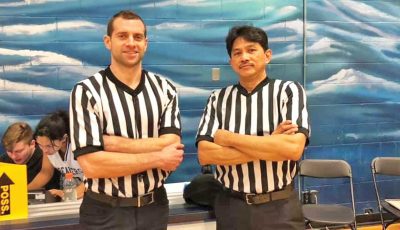Saipan’s Educational Opportunity
I was part of the staff that hosted a group of Japanese students from Koryo High School west of Tokyo at the Northern Marianas College (NMC) Community Development Institute (CDI), stumbling on a market need. In a four-hour set of activities, I enticed 15 Nippongo students to use the English they already knew. Being in Sinosphere that learns English by reading and writing rather than speaking, a leftover of the method used in learning the radicals and characters of their hanzi, kanji, and hanja, they are tongue-tied on speaking.
Saipan is the nearest island to Sinosphere that speaks English with tones often in Indo-Malay-Austro-Polynesian-Urdu and continental Europe accents, as well as the British clip, American twang, Kiwi exactitude, and Aussie slang. With tourism push toward “paradise,” the island sends out visitors back to their homes singing to modern amenities among a recognizably native Micronesian culture and ecologically pristine environs.
The English basis of common discourse that is the islands’ gift, a language immersion program in place is a natural. Created from teaching Oral English in Dong Bei not too long ago, I offer English speaking language immersion thrust to those in Sinosphere who wish to be proficient in oral English as required by their respective academies.
Most language instructions are focused on building vocabulary where words and their meanings are learned first, then get to the phonetic nature of English to learn its sounds and spoken forms. The Putunghua requires 4,000 Hanzi (characters) just to understand the language, and learners readily pick up the spoken form even with its four tones, but is fundamentally visual that requires familiarity with the radicals and their characters to understand it well.
That’s what makes the learning of English native to CNMI voices so attractive. We can package an island tour with an overlay of language immersion to add to the attraction; the tourists learn a language while viewing nature and historical sites.
Here’s a thing that makes language learning often cumbersome. We adopted a method fitted to those learning any of the Sinosphere languages in its reading and written form that requires familiarity with words and meanings. Words in English are translated to the Chinese/Korean/Japanese equivalents, leaving the learner recall the words in their native tongue with their meanings, and forget the English word all together.
We now know that the brain can hold up to 24 languages, and that the learning can be a direct one congruent to the functions of the brain, which has the sensual skills in the medula oblongata, the emotive sensitivities and balance in the cerebellum, and cognitive functions in the cerebrum’s wonderful cortex. All three informs the will when it decides with the guts what to do. Then it goes out and does it, which brings the whole cycle on the spin all over again, only the next time, with a higher level of meaning.
Saipan is naturally capable of immersing learners from the Sinosphere to “speak” their English, in the same vein as the other languages of the world can easily be learned in Saipan, e.g. Zhonghua, Hangul, Nihonggo, Arabo, Urdu, Parsi, to name some, using the same methodology, though for the reading and writing part for Sinosphere, it involves visuals of characters too.
But in learning English, the usual method is to give the meaning of a word, to let one “understand” by giving the translation without pronouncing, hearing, and repeating the English word first, or after the translation. This is not effective pedagogy. Learners remember the native word and ignores the English word all together, for the learner feels ze already “knows” its meaning.
We might suggest the “hear and repeat” method be adhered to first, get the vocal cord to “taste” the syllables and the eardrums to drown on the sound before venturing into exploring the word’s meaning. That’s the universal method a language is learned at Mama’s breast: hear and repeat.
After hearing and repeating the word, they can write it the way it sounds, not to worry whether it is spelled right. Only after they use it in a sentence and write it down does the facilitator show how a word is spelled. If learners hear and repeat a word, they encounter it twice; write it, a third time, and if spelling is corrected, fourth time. The English word, when grounded on experience, is remembered.
Students in China, including but not exclusive of pilots in training at Shenyang Aerospace U are invited to Saipan to spend a week or two on a language immersion course that will let them learn how to learn, allow them to speak English, be exposed and acculturated to an international setting to prepare them for a training in Australia, Canada, or the U.S., visit historical sites and enjoy a swim in the lagoon besides.
The training can be done with the college, island institutes, and travel agencies. I got a product to market. Interested? Send an email.


























